#Johann Heinrich Otto
Text

Johann Heinrich Otto (American, Pennsylvania Dutch, c.1733-c.1800)
Fraktur of a Parrot, c. 1785
Ink & watercolor, 208 × 165 mm (8 3/16 × 6 1/2 in.)
Baltimore Museum of Art 1967.76.3
#fraktur#folk art#Pennsylvania art#Pennsylvania Dutch art#Pennsylvania German art#18th century art#American art#American folk art#parrot#bird#birds in art#works on paper#watercolor#ink#Baltimore Museum of Art#Johann Heinrich Otto
57 notes
·
View notes
Text
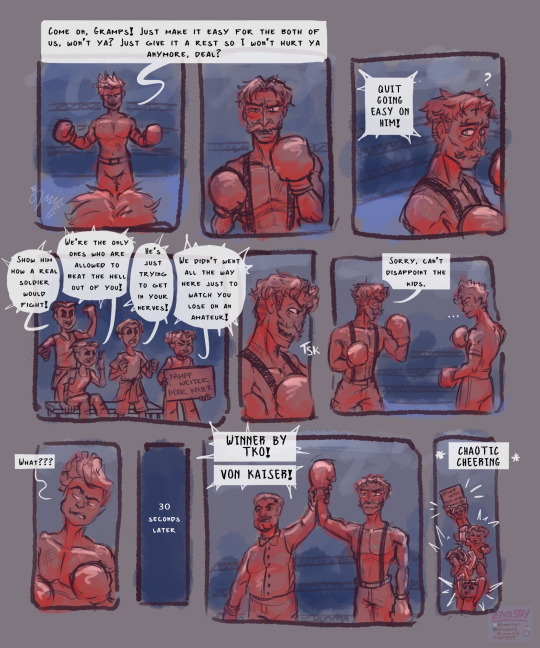
Cheering for herr Kaiser
This was made last year, my first time drawing the kids in the Academy that Von Kaiser teaches at
And then POOF they're now Punch Out OCs!


And here's more doodles of the kids also featuring @matchamabs Academy kids OCs as well! And we love the idea so much, these kids now have a blog @kaisers-academy-kids And now they're all classmates!

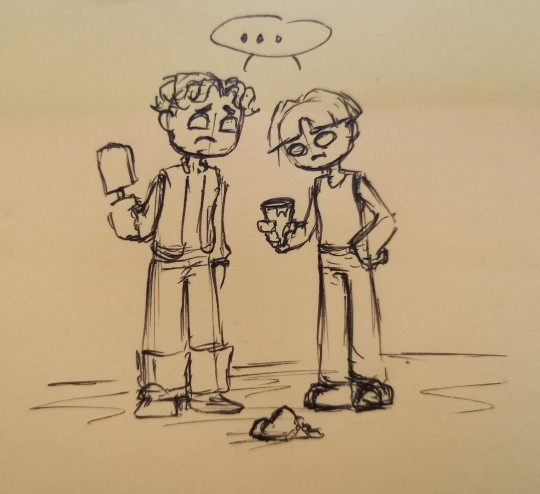


#lazypastry's art#punch out#punch out wii#punch out!!#von kaiser#Punch Out OC#OCs#Kaiser's Academy Kids#Heinrich#Mikhail#Colt#Johannes#Max#Markus#Otto#Just lads and their ol boxing teacher!
86 notes
·
View notes
Note
So members, after you write the list of gifts and toys for christmas, can you show the list of presents that you want for christmas?
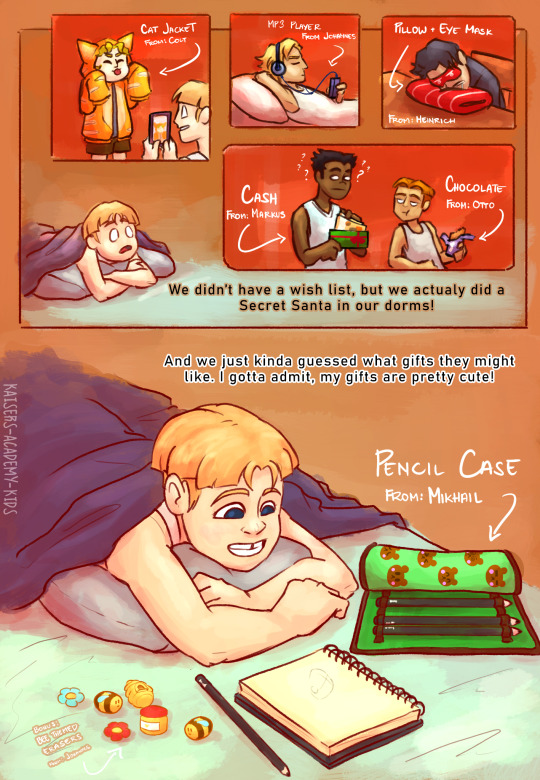
Max: "Meanwhile, I'm Heinrich's Secret Santa and I got him a nice journal! I also added a little surpi-"
Heinrich: "MAX! WHAT. IS. THIS?!"

Max: "Oh! You found the surprise! It's cute, isn't it?"
Heinrich: "I know but why would you draw me with THAT guy?!"
Max: "I mean... I see you follow him around and you look excited when sparring with him-"
Heinrich: "That's because he's my RIVAL!"
#kaiser's academy kids#punch out#punch out wii#punch out!!#von kaiser#punch out oc#Max#Johannes#Markus#Otto#Colt#Mikhail#Heinrich#Belated Merry Christmas
24 notes
·
View notes
Text
Weiße Frauen / White Ladies
White ladies are ghosts that are said to have haunted several castles of European noble families.

The oldest reports of the apparition date from the 15th century, but belief in the white ladies was most widespread in the 17th century. Although there are similarities to other female ghosts in European folk belief – for example the Irish and Celtic banshee – the white lady is a phenomenon that first emerged in and was typical of the high aristocratic culture of the early modern period. Belief in miracles during the Counter-Reformation turned the ghost into an attribute of class that, like coats of arms and legends of lineage, could underline the importance of a noble family. The White Lady of the Hohenzollern family is particularly well known.
The White Lady of the House Hohenzollern
The White Lady of the House Hohenzollern haunts several castles and palaces that are or used to be owned by members of this noble family.
Plassenburg
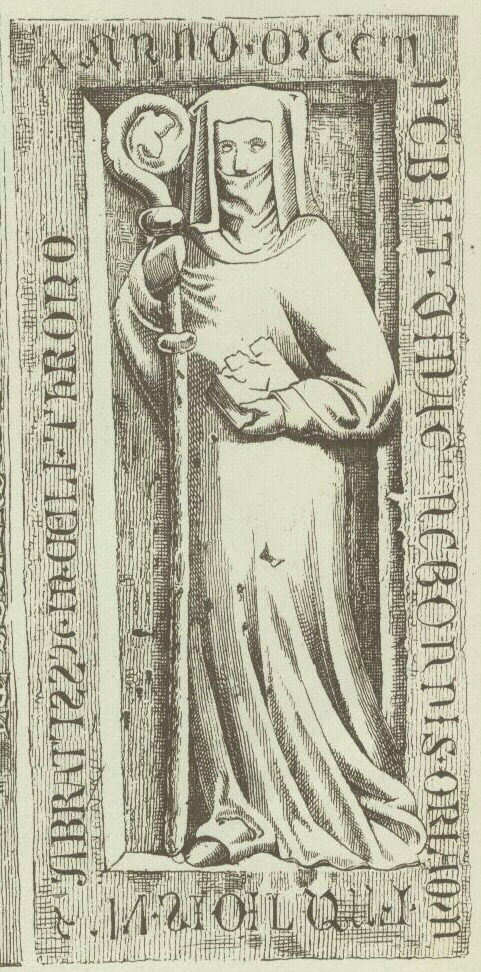
The most well-known legend about the White Lady has its origins at the Plassenburg Castle above Kulmbach and is linked to the Hohenzollern family. The castle's mistress Kunigunde, widow of Count Otto of Orlamünde, had fallen in love with Albrecht the Handsome, son of the Nuremberg burgrave Frederick IV. The latter spread the word that he would marry her if four eyes didn't stand in the way. This referred to his parents, who were against such a union. However, Kunigunde misunderstood the message and related it to her two children, a two-year-old girl and a three-year-old boy. She stabbed the children in the head with a needle, killing them.
Albrecht then renounced her. Kunigunde went on a pilgrimage to Rome and obtained forgiveness for her sins from the Pope, on the condition that she found a monastery and enter it. As penance, she slid on her knees from the Plassenburg Castle into the valley of Berneck and founded the Himmelkron Monastery, where she died as abbess. In a local version of the Himmelkron legend, the monastery already existed at the time of the murder and the two children were buried there. Kunigunde, sliding on her knees, saw the monastery on a hill between Trebgast and Himmelkron and died there of exhaustion.
From then on, the White Lady appeared at the Plassenburg to warn the Hohenzollerns of impending deaths and other impending misfortunes - a worrying but usually not violent phenomenon. According to legend, however, she behaved differently when Margrave George Frederick I, also a Hohenzollern, wanted to take possession of the Plassenburg after its destruction in 1554 during the Second Margrave War and subsequent reconstruction. The White Lady then went so far as to rattle chains, rage around, frighten ladies-in-waiting and finally strangle the Margrave's cook and quartered driver, which caused the latter to leave the Plassenburg.
Berlin City Palace
The White Lady was first seen in the Berlin City Palace on 1 January 1598. There she is said to have appeared to Johann Georg, the Hohenzollern Elector of the Margraviate of Brandenburg, eight days before his death. In this case, the ghost was seen as the spirit of Anna Sydow, the mistress of Joachim II, the Elector's father, who died in 1575 in the Julius Tower of the Spandau Citadel and whom Johann Georg had had dispossessed and imprisoned, contrary to his documented promise.

The White Lady continued to appear frequently in the Berlin City Palace. In 1619 she is said to have appeared there before the death of Johann Sigismund. In 1651, newspapers reported about great concern about the continued existance of the House Hohenzollern in the male line after the White Lady appeared. 1 years previously, Prince Wilhelm Heinrich, the only heir to the throne, had died age 1½ years, and the elector's wife had not yet become pregnant again.
In 1660, she is said to have been seen before the death of Elisabeth Charlotte, the mother of the Great Elector. She is also said to have appeared to Louise Henriette of Orange, and before the death of the Great Elector in 1688, to the court preacher Anton Brusenius. According to a report by the historian Karl Eduard Vehse, the White Lady was once quite heartily approached under the Great Elector. Konrad von Burgsdorff, a confidant of the Elector and a cold-blooded man, is said to have suddenly seen the White Lady on the steps in front of him one evening after he had put his master to bed and was about to go down a small staircase to the garden. Once he had overcome his initial shock, he called out to the figure: "You old sacramental whore, haven't you drunk enough princely blood yet, do you want more?" Apparently annoyed by this disrespectful address, the White Lady grabbed him by the collar and threw him down the stairs so that his bones cracked. Other attempts to get hold of the White Lady were not always unsuccessful: under Frederick William I, she was arrested twice. Once it was a kitchen boy who had dressed up as the White Lady and was whipped as punishment, and the other time it was a soldier.
Further apparitions occurred before the death of Frederick I in 1713 and that of Frederick William II in 1797. When the health of Frederick William III became very precarious in the winter of 1839/40, the lady-in-waiting Caroline von der Marwitz wrote a report about the appearance of the White Lady.
She also appeared – perhaps a little prematurely – before the completely unsuccessful assassination attempt by Heinrich Ludwig Tschech on Frederick William IV in 1844. On this occasion, she is said to have appeared at night in the Swiss Hall of the City Palace, wringing her hands. She also appeared in 1888 before the death of Frederick III. Even when the National Socialists were in charge of the Berlin Palace instead of the Hohenzollerns, she is said to have appeared again on the night of May 26, 1940.
It is uncertain whether the White Lady will reappear in the Humboldt Forum, the newly built partial reconstruction of the Berlin City Palace. Some superstitious people say that the reconstruction was intentionally left incomplete to stave off the White Lady of the House Hohenzollern.
Heidecksburg

In the Heidecksburg near Rudolstadt (Thuringia), the White Lady is said to have appeared to Prince Louis Ferdinand of Prussia, also a member of the Hohenzollern family, in the Green Salon, as his adjutant Karl von Nostitz-Jänkendorf reported. The next day, 10 October 1806, the prince was killed in the Battle of Saalfeld.

Other places
The White Lady also appeared in other places in possession of the House Hohenzollern and its branch lines. Apoearances are reported from Bayreuth, Lauenstein Castle, Hohenzollern Castle, and Kuckuckstein Castle.
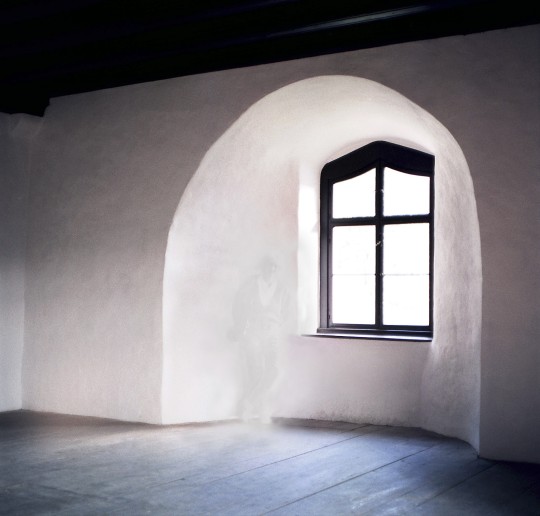
Places belonging to other noble families are haunted by White Ladies as well. In Friedenstein Palace in Gotha, the ghost of Dorothea Maria of Anhalt is said to moanfully wander the rooms at night. Eleonore von Dönhoff is said to haunt Kossenblatt Castle. Oftentimes, noble ladies who found a violent death are linked to White Ladies, such as Jakobe von Baden in Düsseldorf Castle.
In Aussel Manor in Batenhorst near Rheda-Wiedenbrück, the wife of a former estate owner is said to haunt the premises. She is said to have been walled in in the cellar after her husband had been away for a long time during the war and caught her with a lover. She is said to have starved to death there because her husband did not return after taking part in another military campaign.

98 notes
·
View notes
Text
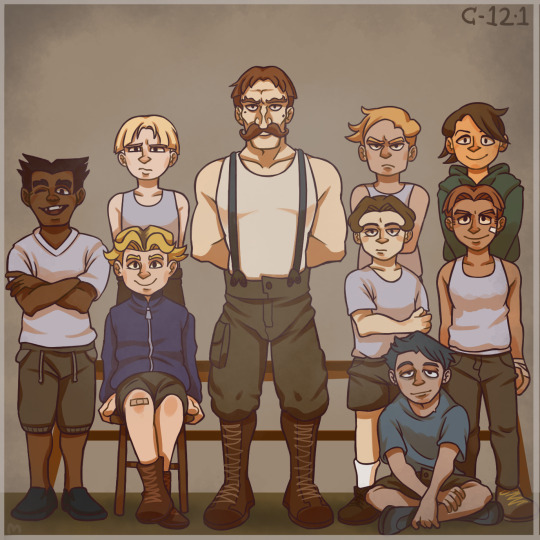

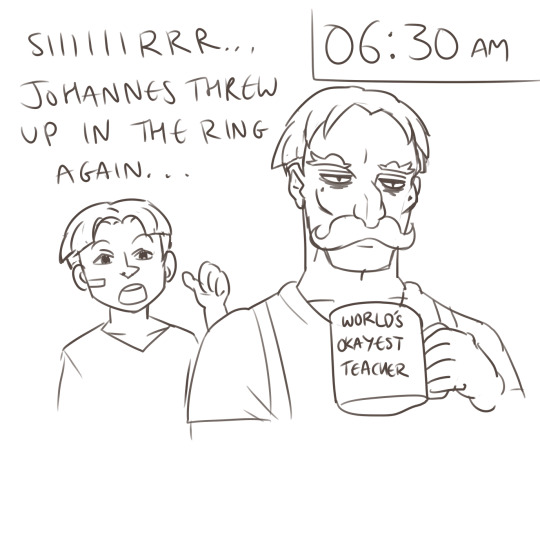

Punchtober - Day 6: Von Kaiser
ok so. i took SOME liberties with the prompt but i took it as an opportunity to finish the piece I had sitting in my folder for a while featuring the Academy Kids, made by me and @lazypastrys-thingymajingky
i feel like his work life is a fuckin mess lmao. also ft frederich, his big bro lmao. i love drawing that asshole. anyway i love to think about what it's like teaching kids boxing, and based on the opening cutscene he had, we made these cute lil kids for his class. they also turned out to be assholes <3 plus also hc drawing sitting in my folder collecting dust
Middle Row: Colt, Johannes, Heinrich & Mikhail belong to @lazypastrys-thingymajingky
Bottom + Top: Max, Markus, Otto & Felix are mine <3
#punch out#punch out!!#super punch out#punch out wii#von kaiser#von kaiser academy kids#punchtober2023#potober2023
126 notes
·
View notes
Text
La Fayette and the "Emkendorfer Kreis"
The Emkendorfer Kreis (the Emkendorf Circle) was a Danish-German intellectual society that focused mainly on literature, music and theological discussions. It was formed around Friederike Juliane Gräfin von Reventlow (Countess of Reventlow, pictured below.) The circle counted such luminaires like Matthias Claudius, Friedrich Gottlieb Klopstock, Matthias Claudius, Heinrich Christian Boie, Johann Heinrich Voß and Friedrich Heinrich Jacobi as its members. It was sometimes also referred to as the Weimar des Nordes (the Weimar of the North.)

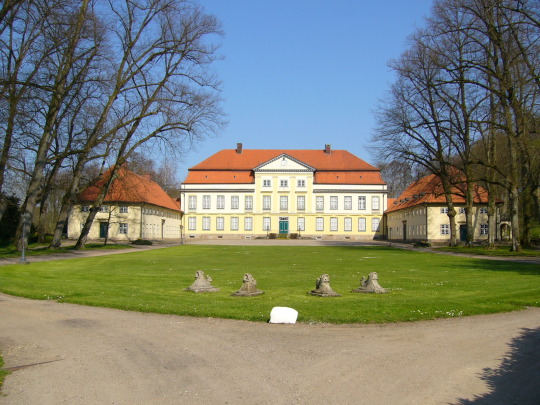
The name of the group derived from the manor “Emkendorf” (pictured above) that was and to this day still is owned by the von Reventlow family. The von Reventlow family is a noble family with great influence in both Denmark and Germany. Several members of the family were diplomats and held high offices while also having significant influence on the academic and artistic landscape of their day. Although the influence of the family has diminished over the last two centuries, the family still has considerable holdings in northern Germany, is well connected and engaged in local politics. Gut Emkendorf in particular is often the venue for cultural or musical presentations, special markets were craftspeople can sell their goods as well as guided tours that touch on the regional as well as on the family history.
Gut Wittmold and Gut Lehmkuhlen, the two mansions where La Fayette and his family stayed during their exile in Danish-Holstein, are close by and the La Fayette’s as well as friends and other family members were guests at Gut Emkendorf and occasionally present when the Emkendorfer Kreis met. The relationship between the von Reventlow's and the La Fayette’s in particular was rather cold and reserved. I wrote in this post here about Friederike Juliane’s opinion on Adrienne and her sister Pauline, but there was far more to the matter.
Überhaupt hat der Aufenthalt all dieser Fremdlinge in Emkendorf dazu beigetragen, sich über die Ereignisse der Französischen Revolution genauer zu unterrichten, keineswegs aber das Urteil darüber zu mildern. Hier, wo ohnehin die alte ständische Gliederung als einzig wahre Staatsform betrachtet und deutscher Geisteskultur der Vorrang vor jeder anderen, besonders der französischen, gegeben wurde, konnten jene liberalen französischen Royalisten bei allem Mitgefühl für ihr Schicksal doch nicht auf volle Übereinstimmung mit ihren Zielen rechnen. Ein Mann wie Lafayette, der Holstein ebenfalls zu seinem Asyl für kurze Zeit erkor, ist in Emkendorf als unmittelbarer Mitschuldiger an den blutigen Anfängen der Revolution mit eisiger Kälte empfangen und wieder entlassen worden (…)
Otto Brandt, Geistesleben und Politik in Schleswig-Holstein um die Wende des 18. Jahrhunderts, Outlook Verlag GmbH, Frankfurt, 2022, original reprint from 1925, pp. 150-151.
My translation:
In general, the stay of all these foreigners in Emkendorf helped the people in Emkendorf to learn more about the events of the French Revolution, but in no way did it softened their judgment. Here, where the old system of goverment was regarded as the only true form of government and German intellectual culture was given priority over any other, especially French intellectual culture, those liberal French royalists, with all the sympathy for their fate, could not count on full agreement with their ideals. A man like Lafayette, who also chose Holstein as his asylum for a short time, was received in Emkendorf, as a direct accomplice in the bloody beginnings of the revolution, with icy coldness (...)
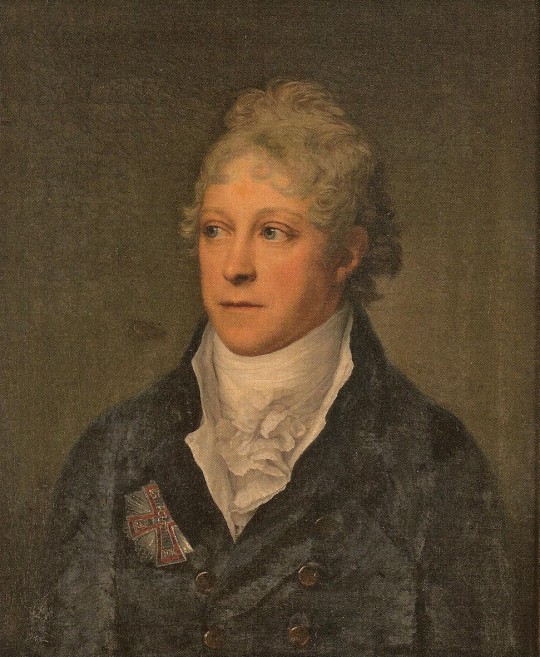

The next passage partly quotes a letter from Friedrich “Fritz“ Karl Graf von Reventlow (left, Friederike Juliane’s husband) to his brother Cay Friedrich Graf von Reventlow (right) from June 1, 1798
Übrigens war man in Emkendorf überzeugt, dass Lafayette bei „seinem stillen und eingezogenen Wesen“ sich nicht „als Werkzeug brauchen lasse“ und nicht „kleine niedrige Künste und Ränke“ anwende um „den Geist der Revolution auch im Norden zu erregen“.
Otto Brandt, Geistesleben und Politik in Schleswig-Holstein um die Wende des 18. Jahrhunderts, Outlook Verlag GmbH, Frankfurt, 2022, original reprint from 1925, pp. 151.
My translation:
People in Emkendorf were convinced that Lafayette, with “his quiet and withdrawn nature”, would not let anyone “use him as a tool” and would not use “small low arts and intrigues” to “excite the spirit of the revolution in the north as well”.
While I myself always like to point out that La Fayette was far more than the bubbly teenager, he is often made out to be, I find it nevertheless quite remarkable that La Fayette is described here as “quite and withdrawn”. It shows once more that the last years had been a living nightmare for him and his family.
#marquis de lafayette#la fayette#la fayette in exile#wittmoldt#lehmkuhlen#emkendorf#french history#history#french revolution#letter#1798#german history#danish history#friederike juliane gräfin von reventlow#von reventlow#cay friedrich graf von reventlow#friedrich “fritz” karl graf von reventlow#adrienne de lafayette#adrienne de noailles#pauline de noailles#matthias claudius#Matthias Claudius#friedrich gottlieb klopstock#heinrich christian boie#johann heinrich voß#friedrich heinrich jacobi#emkendorfer kreis
26 notes
·
View notes
Text



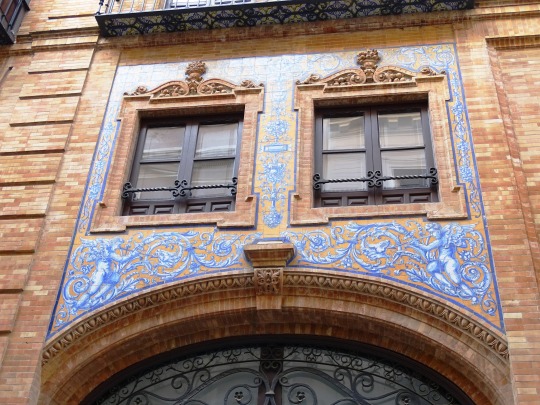



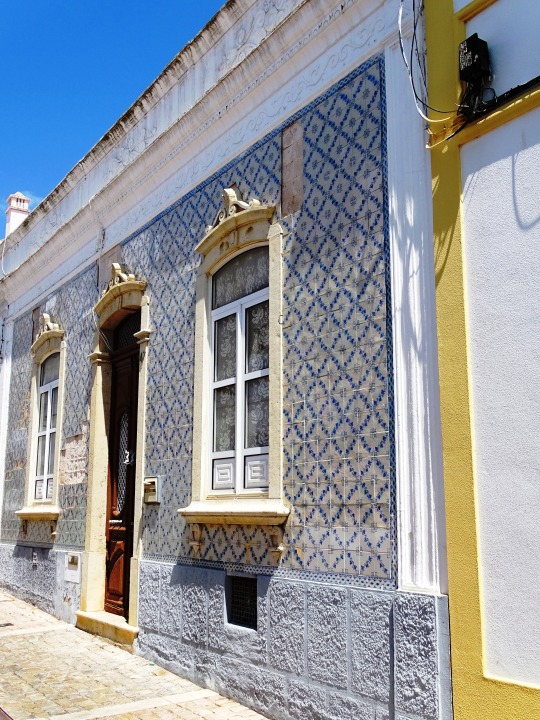




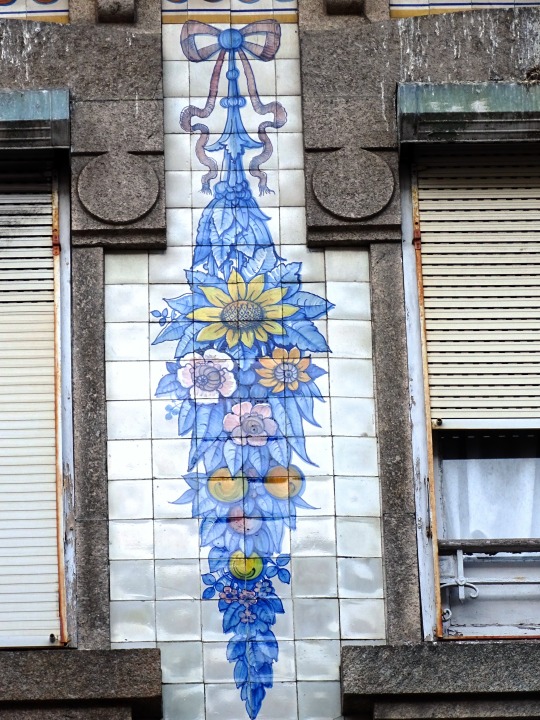


World Tessellation Day
World Tessellation Day is celebrated on June 17 every year. Tessellation is the art of tiling a plane using geometric shapes in the form of tiles that require specific measurements. This holiday is dedicated to appreciating the fascinating art of tessellation and honoring these math-inspired visual artists who don’t often get recognized. Today also allows kids to explore this art form as a hobby. While it’s all about creativity, it also requires analytical skills — a great exercise to boost young children’s left and right brain functions. Learn more about the activities you can do to celebrate World Tessellation Day.
History of World Tessellation Day
The origin of the mathematical art of creating patterns, or tessellation, dates back to 4000 B.C. when ancient Sumerians discovered the use of clay tiles as home and temple decorations. It wasn’t too long until the next civilizations quickly adopted tessellation both in art and architecture. The Arabs, Chinese, Egyptians, Japanese, Romans, Persians, and the Moors practiced the use of repeated patterns and geometric designs in their decorative arts. During the classical antiquity period in the 8th century, tessellation became a staple for mosaic tiling decorations using small square blocks called ‘tesserae.’
In the 4th century, one of the most famous tessellation art was made by the Muslim Moors in Grenada, Spain: the Alhambra, an Islamic tessellation artwork composed of countless tiles in geometric positions that were constructed for the residence and court of Mohammed ibn Yusuf Ben Nasr.
In 1619, Johannes Kepler conducted the first official and documented study of tessellation art. In his book “Harmonice Kundi,” he cited regular and semi-regular geometric designs that heavily influenced modern-day tessellation. He’s also the first person to explore and document the hexagonal features of honeycomb and snowflakes.
In 1891, Russian crystallographer Yevgraf Fyodorov explained in a more advanced study that every periodic tiling in a plane has one of 17 isometries. This study marks the first official recognition of tessellation as a mathematical study. This was further explored by Otto Kienzl and Heinrich Heesch in 1964, and Alexei Shubnikov and Nikolain Belov in 1964.
Today, contemporary artists introduced different modern permutations such as surreal landscapes, hand-print patterns, and paper tessellations.
World Tessellation Day timeline
4000 B.C. The Birth of Tessellation
Sumerians introduce tessellation using clay tiles.
4th Century The Most Famous Tessellation Art
Muslim Moors construct the Alhambra as a residence and court for Mohammed ibn Yusuf Ben Nasr.
1619 The First Study of Tessellation Art
Johannes Kepler studies and explains regular and semi-regular geometric designs of tessellation art.
1891 Tessellation as a Mathematical Study
Russian crystallographer Yevgraf Fyodorov introduces tessellation as a form of math.
World Tessellation Day Activities
Create your own tessellation art
Take tessellation courses
Try digital tessellation art
From tiles to paper designs, you can create your own tessellation art design by just using the simplest materials found in your home. Follow D.I.Y. tutorials on YouTube and let your creative juices flow.
Tessellation art classes are ideal for kids who show artistic and creative potential. Enroll your child in your local art school and let them take weekend classes to boost their creativity and analytical capacity.
Spend the day on your laptop and try out the latest tessellation trend: digital art patterns. There are several apps for tessellation making. Be sure to save your final product and upload it on your social media with the hashtag #TessellationDay
5 Interesting Facts About Tessellation
Only three regular polygons tile a plane
A cube in 3.D.
Tessellation is science
Three ways to construct a tessellation
The father of modern tessellation
Only a square, triangle, and hexagon can completely tile a plane.
A Cube in 3.D. is the only regular polyhedron that can independently tessellate.
Science supports that beehive honeycombs, snowflakes, and dried-up mud are all geometric.
The three categories of tessellation construction are translation, reflection, and rotation.
Dutch artist M.C. Escher is considered the father of modern tessellation.
Why We Love World Tessellation Day
It uses both the left and right brain
Tessellation in fashion is trending
It’s an underappreciated art
Tessellation art is a good exercise to be both creative and mathematical. Unlike other art projects, tessellating requires math while executing your creative vision. It’s perfect for kids’ brain development.
The minimalist era of fashion is on the rise. Tessellation designs of repeated patterns on clothes are hip and trendy. It’s a great excuse to wear these designs on World Tessellation Day.
Not many people know about the cultural, scientific, and mathematical history of tessellation. It’s a great way to introduce this to people to honor the artists and scholars who dedicate their lives to this art form.
Source
#Carboneras#Mojácar#Spain#España#summer 2021#original photogrpahy#architecture#cityscape#travel#vacation#tourist attraction#Sevilla#Albufeira#Portugal#Azulejo#Lisbon#façade#detail#Southern Europe#World Tessellation Day#17 June#WorldTessellationDay
16 notes
·
View notes
Text
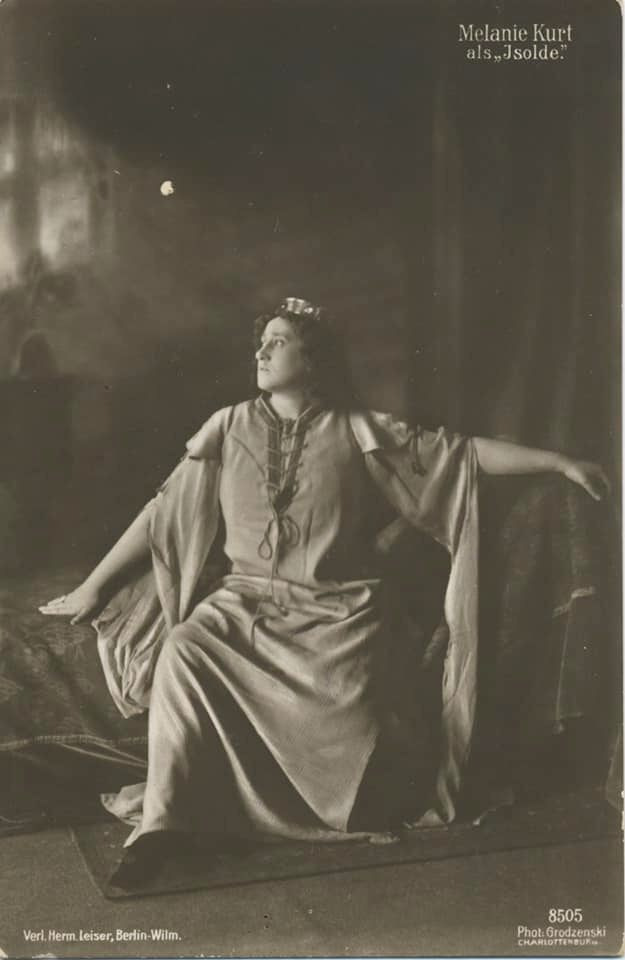
Here a picture of Melanie Kurt as Isolde.
Born on January 8th 1880 in Vienna, Melanie Kurt studied piano before her voice was discovered. Her singing teachers were Fanny Müller and Mari Lehmann, famous sister of the even more famous Lilli, Lehmann. In 1902 Kurt gave her debut as E1isabeth in "Tannhäuser" at the Stadttheater in Lübeck. In 1905 she moved on to Braunschweig and in 1908 arrived at the Berlin Court Opera. She became known internationally through her guest appearances at the London Covent Garden Opera as Sieglinde, in 1910 and later performances in Budapest, Dresden, Munich and several Italian Opera Houses. At the Salzburg Festival she sang together with Hermine Kittel and Lilli Lehmann the Three Ladies in "Die Zauberflöte". In 1913 she joined the ensemble of the just opened Deutsche Opernhaus Berlin, where she concentrated on dramatic roles: she was Berlin's first Kundry at the premiere at the Deutsches Opernhaus on January 1st 1914. Her contract with the Metropolitan Opera in 1915 can be considered the high point of the soprano's career. During those three years in New York she not only sang the dramatic Wagner-roles, but also mezzo roles, such as Fricka in "Rheingold", she was Amelia in "Un Ballo in Maschera" (with Enrico Caruso and Pasquale Amato), Marschallin in "Rosenkavalier", Iphigenie, Santuzza, Leonore ("Fidelio") and Pamina (in a cast which included Carl Braun and Frieda Hempel and saw as Tamino either Johannes Sembach, Jacques Urlus or Otto Goritz). In the programs of her MET concerts she also tried to include less familiar arias, such as the then only rarely performed Rezia aria from "Oberon" or Johanna's aria from the opera by Tschaikovsy. After the 1916/17 season most German singers, especially if they had focused their repertory on Wagner opera, left the MET: together with Margarete Arndt-Ober, Ernestine Schumann Heink, Johanna Gadski, Carl Braun, Otto Goritz, Johannes Sembach, Hermann Weiland Jacques Urlus Melanie Kurt left the United States in 1917. Kurt's last performance at the MET as Brünnhilde on March 28th 1917 (with Urlus, Braun, Reiss and Arndt-Ober) was at the same time the last "Siegfried" until 1923. After her return to Europe Melanie Kurt accepted no more long-term engagements but gave guest performances, especially in her much acclaimed Wagner roles, at all major European stages. She was the first Brünnhilde in "Siegfried" at the Waldoper Zoppot when the Festival was opened in 1922. The performance was conducted by the young Hans Knappertsbusch and the cast included Fritz Vogelstrom, Heinrich Knote, Werner Engel, Waldemar Henke, Desider Zador and Margarete Arndt-Ober. After having ended her singing career Melanie Kurt lived in Berlin and later in Vienna where she was active as a singing teacher. After the annexion of Austria by the Third Reich in 1938 she was able to leave her home country in time and emigrated to the United States where she died in New York on March 11th 1941.
#Melanie Kurt#Kurt#dramatic soprano#soprano#opera#bel canto#classical music#music history#classical singer#opera singer#classical singing#operatic soprano#operatic singing#operatic singer#composer#classical composer#richard wagner#wagner#tristan und isolde#aria#diva#maestro#prima donna#chest voice#Royal Opera House#covent garden#La Scala#The Metropolitan Opera#The Met#Metropolitan Opera
4 notes
·
View notes
Photo

VISIONÄRE SCHWEIZ (Aloïse (Aloïse Corbaz), Esther Altorfer, Adolphe Appia, Karl Ballmer, Karl Bickel, Arnold Böcklin, Christian Boltanski, Johann Michael Bossard, Gilbert Clavel, Max Daetwyler, Martin Disler, Henry Dunant, Niklaus von Flüe, Johann Heinrich Füssli, Alberto Giacometti, Augusto Giacometti, Werner Hertig, Ferdinand Hodler, Franz Huemer, Ettore Jelmorini, Paul Klee, Emma Kunz, Richard Paul Lohse, Bernhard Luginbühl, Ingeborg Lüscher, Annemarie von Matt, Mario Merz, Marisa Merz, Otto Meyer-Amden, Heinrich Anton Müller, Robert Müller, Auguste de Niederhäusern-Rodo, Hermann Obrist, Meret Oppenheim, Walter Peter, Markus Raetz, Dieter Roth, Ernst Georg Rüegg, Armand Schulthess, Louis Soutter, Daniel Spoerri, Walter Arnold Steffen, Robert Strübin, Sophie Taeuber-Arp, Jean Tinguely, Niele Toroni, Albert Trachsel, Félix Vallotton, Ben Vautier, Bruno Weber, Ilse Weber, Walter Kurt Wiemken, Eva Wipf, Caspar Wolf, Adolf Wölfli) A cura di Harald Szeemann Testi di Harald Szeemann, Theo Kneubühler, Aurel Schmidt. Verlag Sauerländer Aarau, 1991. ISBN 978-3-7941-3437-0 https://www.instagram.com/p/Ck0lCnno1v_/?igshid=NGJjMDIxMWI=
2 notes
·
View notes
Text
Kalender - Historische Bilder aus Norddeutschland 1985 der Vereinsbank (Vereins- und Westbank AG) mit den Inhalten:
- Blick über die Elbe vom hohen Ufer oberhalb Neumühlens, um 1840 - von Joachim Faber
- Uklei-See bei Eutin, um 1810 - von Ludwig Philipp Strack
- Blick auf die Kieler Förde von der Forstbaumschule, um 1830 - von Johann Ludwig Hansen
- Riddagshausen bei Braunschweig um 1850, Jürgen Brandes
- Landschaft bei Stade, 1831 - von Johann Wilhelm David Bantelmann
- Blick von Stöfs bei Gut Waterneversdorf auf die Hohwachter Bucht/Ostsee, um 1861 - von Heinrich Louis Theodor Gurlitt
- Windmühlen in der Wilstermarsch bei Schotten, 1911 - von Friedrich Kallmorgen
- Blick vom Stemmer Berg auf Leveste und den Deister, um 1830/40 - vermutlich von Justus Elias Kasten
- Die Elbe bei Blankenese, 1844 - von Adolf Friedrich Vollmer
- Heidelandschaft mit Schafen, 1852 - von Fransois Auguste Ortmans
- Fischer am Ostseestrand, 1837 - von Johann Jacob Gensler
- Gut Neuerstaven bei Oldesloe, 1857 - von Otto Speckter
- Strand auf Sylt, 1873 - von Hinrich Wrage
- Landschaftsmalerei in Deutschland im 19. Jahrhundert
Maße: 33 x 29 cm
0 notes
Note
How old are you guys?
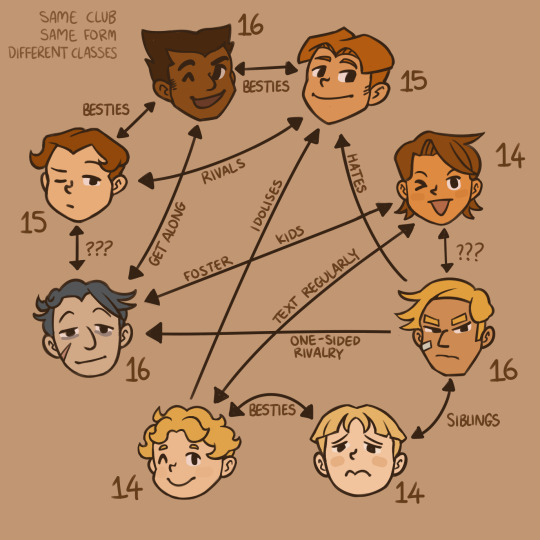
Johannes: "So I drew up this neat little chart--"
Otto: "This looks like a lot of effort for a simple question..."
Johannes: "I thought it would be much more informative! I did a good job though, didn't I?"
#kaiser's academy kids#punch out#punch out wii#punch out!!#von kaiser#punch out oc#heinrich#mikhail#colt#max#markus#otto#felix#johannes
25 notes
·
View notes
Text
You gotta love the blunt bynames of medieval monarchs of the territories in today’s Saxony:
Albrecht der Bär (the bear)
Konrad der Fromme (the devout)
Dedo der Feiste (the fat)
Dietrich der Bedrängte (the embattled)
Heinrich der Erlauchte (the illustrious)
Friedrich der Stammler (the stutterer)
Otto mit dem Pfeil (with the arrow)
Albrecht der Entartete (the degenerate)
Friedrich mit der gebissenen Wange (with the bitten cheek)
Friedrich der Magere (the skinny)
Friedrich der Strenge (the stern)
Wilhelm der Einäugige (the one-eyed)
Wilhelm der Reiche (the rich)
Friedrich der Streitbare (the strident)
Friedrich der Einfältige (the silly)
Friedrich der Sanftmütige (the docile)
Wilhelm der Tapfere (the stalwart)
Johann der Beständige (the steady)
171 notes
·
View notes
Photo
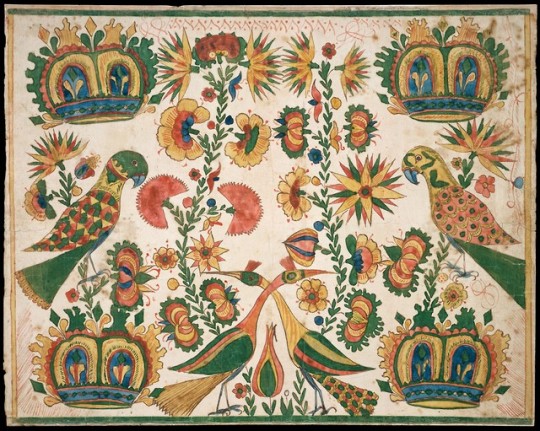
Johann Heinrich Otto - Fraktur, ca. 1770-1800.
By 1770, Otto, a German émigré, had begun to make various forms of fraktur, a style of decorative calligraphy named after a sixteenth-century German typeface. Otto’s skill is evident in the pleasing checks and balances of colour and form he achieved in the composition of repetitive motifs. For example, the parrots perched at either side of the sheet and the two peacocks that cross necks above the tulip are nearly identical in form but vary in the patterning on their wings. Touches of blue enhance the harmony among the reds, greens, and yellows that dominate in Pennsylvania German fraktur designs.
Credit: The Metropolitan Museum of Art
Art Through Time
#johann heinrich otto#18th century#eighteenth century#United States#american#german american#watercolor#pen#iron gall ink#graphite#drawing#american art#american folk art#animal#bird#federal era#floral motif#pen and ink#paper
1 note
·
View note
Photo
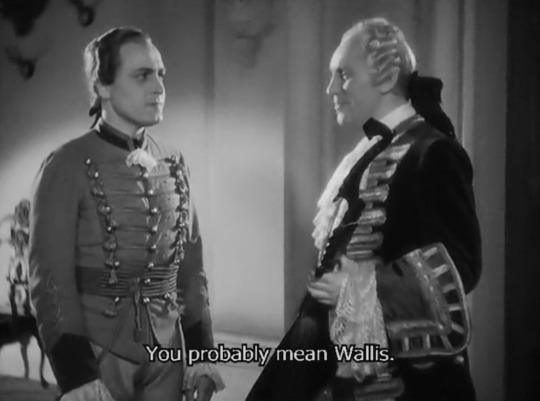

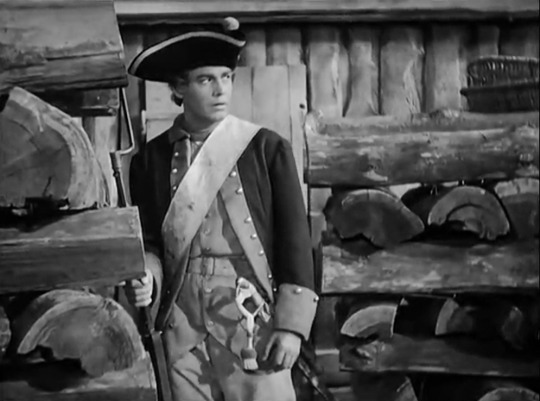
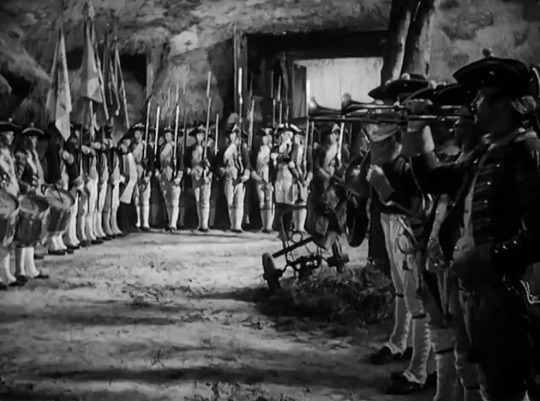
#fridericus#johannes meyer#1937#bernhard minetti#john malkovich#j'accuse#roman polanski#barry lyndon#stanley kubrick#heinrich böll#entfernung von der truppe#otto gebühr
1 note
·
View note
Photo

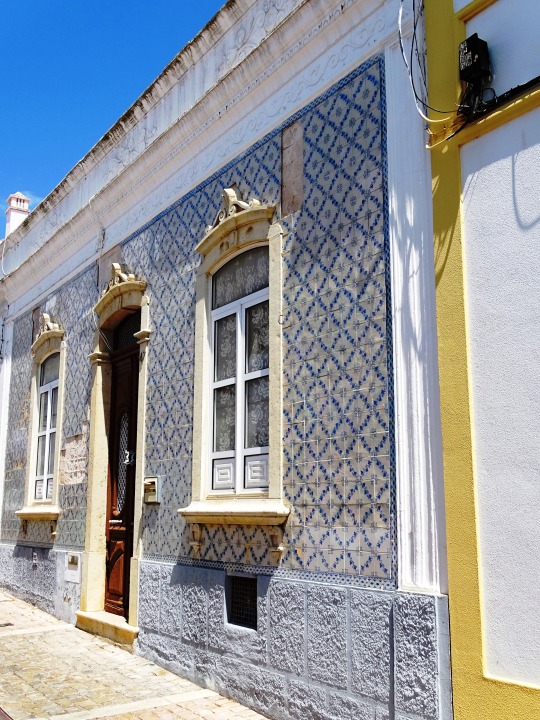






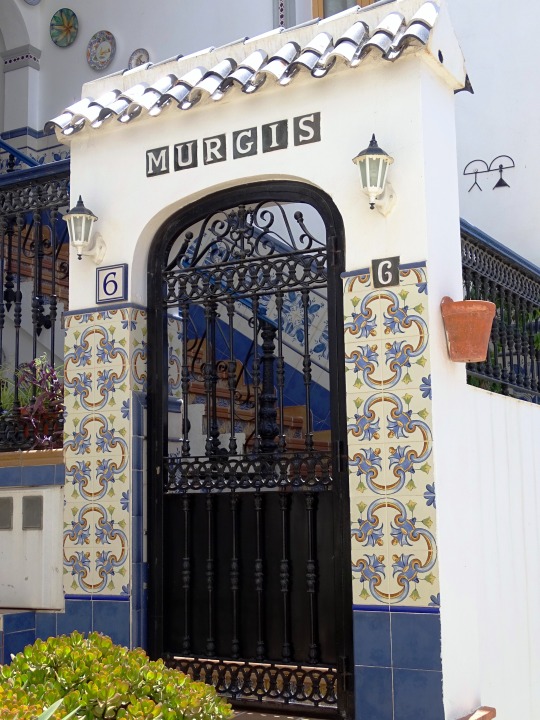
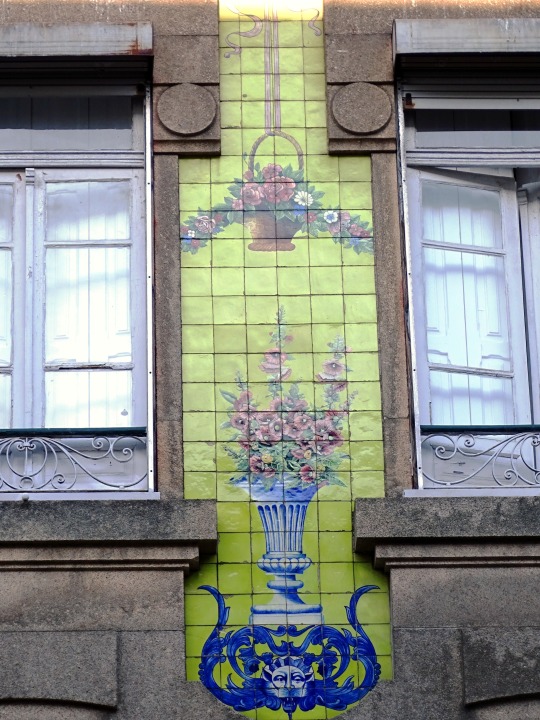
World Tessellation Day
World Tessellation Day is celebrated on June 17 every year. Tessellation is the art of tiling a plane using geometric shapes in the form of tiles that require specific measurements. This holiday is dedicated to appreciating the fascinating art of tessellation and honoring these math-inspired visual artists who don’t often get recognized. Today also allows kids to explore this art form as a hobby. While it’s all about creativity, it also requires analytical skills — a great exercise to boost young children’s left and right brain functions. Learn more about the activities you can do to celebrate World Tessellation Day.
History of World Tessellation Day
The origin of the mathematical art of creating patterns, or tessellation, dates back to 4000 B.C. when ancient Sumerians discovered the use of clay tiles as home and temple decorations. It wasn’t too long until the next civilizations quickly adopted tessellation both in art and architecture. The Arabs, Chinese, Egyptians, Japanese, Romans, Persians, and the Moors practiced the use of repeated patterns and geometric designs in their decorative arts. During the classical antiquity period in the 8th century, tessellation became a staple for mosaic tiling decorations using small square blocks called ‘tesserae.’
In the 4th century, one of the most famous tessellation art was made by the Muslim Moors in Grenada, Spain: the Alhambra, an Islamic tessellation artwork composed of countless tiles in geometric positions that were constructed for the residence and court of Mohammed ibn Yusuf Ben Nasr.
In 1619, Johannes Kepler conducted the first official and documented study of tessellation art. In his book “Harmonice Kundi,” he cited regular and semi-regular geometric designs that heavily influenced modern-day tessellation. He’s also the first person to explore and document the hexagonal features of honeycomb and snowflakes.
In 1891, Russian crystallographer Yevgraf Fyodorov explained in a more advanced study that every periodic tiling in a plane has one of 17 isometries. This study marks the first official recognition of tessellation as a mathematical study. This was further explored by Otto Kienzl and Heinrich Heesch in 1964, and Alexei Shubnikov and Nikolain Belov in 1964.
Today, contemporary artists introduced different modern permutations such as surreal landscapes, hand-print patterns, and paper tessellations.
World Tessellation Day timeline
4000 B.C. The Birth of Tessellation
Sumerians introduce tessellation using clay tiles.
4th Century The Most Famous Tessellation Art
Muslim Moors construct the Alhambra as a residence and court for Mohammed ibn Yusuf Ben Nasr.
1619 The First Study of Tessellation Art
Johannes Kepler studies and explains regular and semi-regular geometric designs of tessellation art.
1891 Tessellation as a Mathematical Study
Russian crystallographer Yevgraf Fyodorov introduces tessellation as a form of math.
World Tessellation Day Activities
Create your own tessellation art
Take tessellation courses
Try digital tessellation art
From tiles to paper designs, you can create your own tessellation art design by just using the simplest materials found in your home. Follow D.I.Y. tutorials on YouTube and let your creative juices flow.
Tessellation art classes are ideal for kids who show artistic and creative potential. Enroll your child in your local art school and let them take weekend classes to boost their creativity and analytical capacity.
Spend the day on your laptop and try out the latest tessellation trend: digital art patterns. There are several apps for tessellation making. Be sure to save your final product and upload it on your social media with the hashtag #TessellationDay
5 Interesting Facts About Tessellation
Only three regular polygons tile a plane
A cube in 3.D.
Tessellation is science
Three ways to construct a tessellation
The father of modern tessellation
Only a square, triangle, and hexagon can completely tile a plane.
A Cube in 3.D. is the only regular polyhedron that can independently tessellate.
Science supports that beehive honeycombs, snowflakes, and dried-up mud are all geometric.
The three categories of tessellation construction are translation, reflection, and rotation.
Dutch artist M.C. Escher is considered the father of modern tessellation.
Why We Love World Tessellation Day
It uses both the left and right brain
Tessellation in fashion is trending
It’s an underappreciated art
Tessellation art is a good exercise to be both creative and mathematical. Unlike other art projects, tessellating requires math while executing your creative vision. It’s perfect for kids’ brain development.
The minimalist era of fashion is on the rise. Tessellation designs of repeated patterns on clothes are hip and trendy. It’s a great excuse to wear these designs on World Tessellation Day.
Not many people know about the cultural, scientific, and mathematical history of tessellation. It’s a great way to introduce this to people to honor the artists and scholars who dedicate their lives to this art form.
Source
#Azulejo#tiles#Albufeira#district of Faro#Sevilla#Seville#Spain#Portugal#summer 2021#original photography#architecture#cityscape#façade#travel#vacation#World Tessellation Day#WorldTessellationDay#17 June#Porto#Southern Europe#España#tourist attraction#landmark#detail#exterior#bench#I really love the first pic
1 note
·
View note
Text

Fraktur
ca. 1770–1800
Johann Heinrich Otto
29 notes
·
View notes